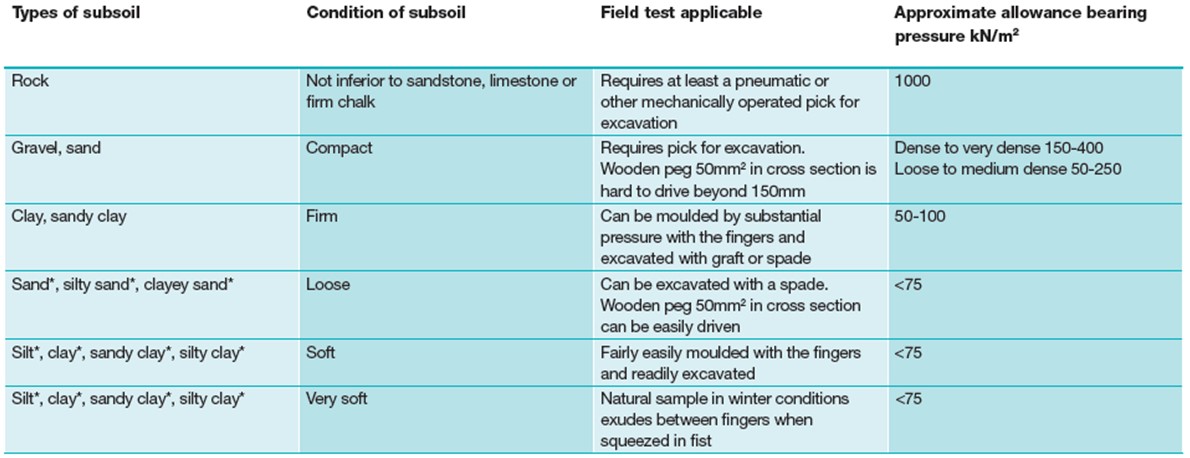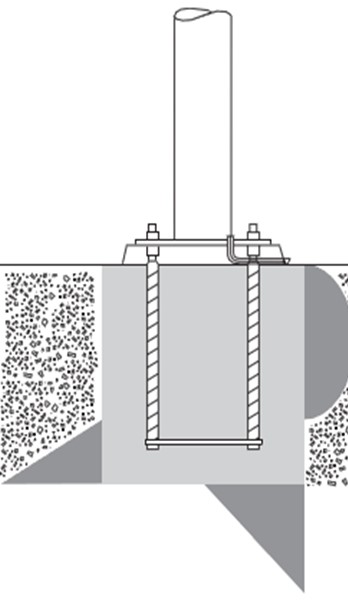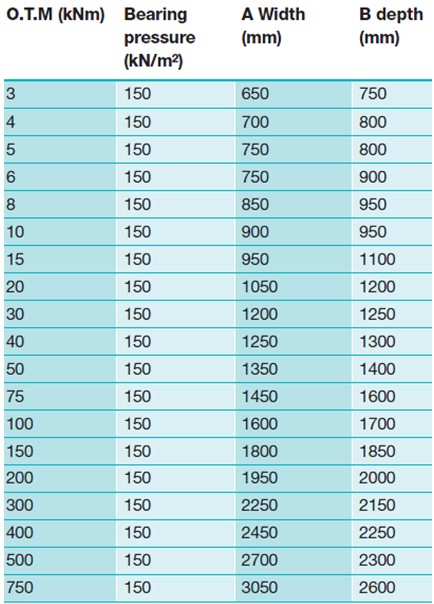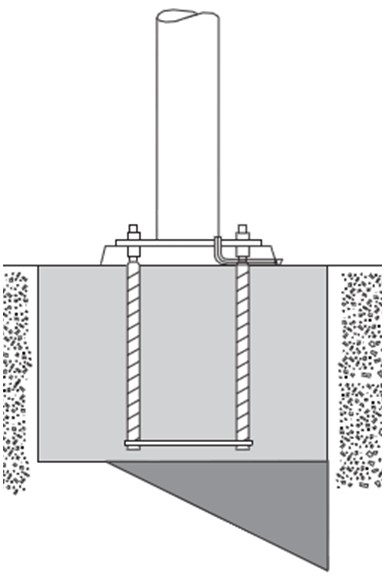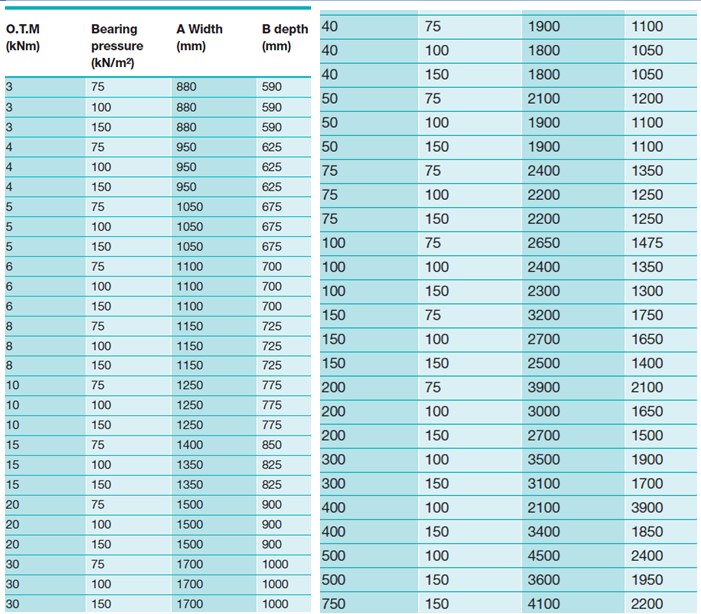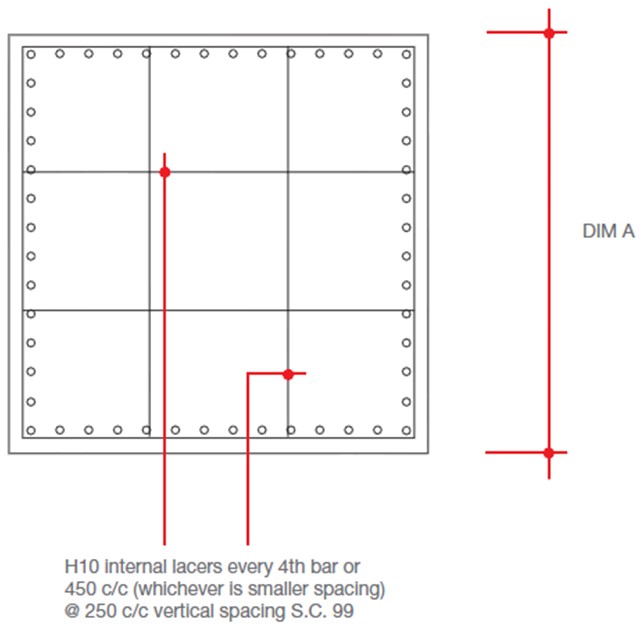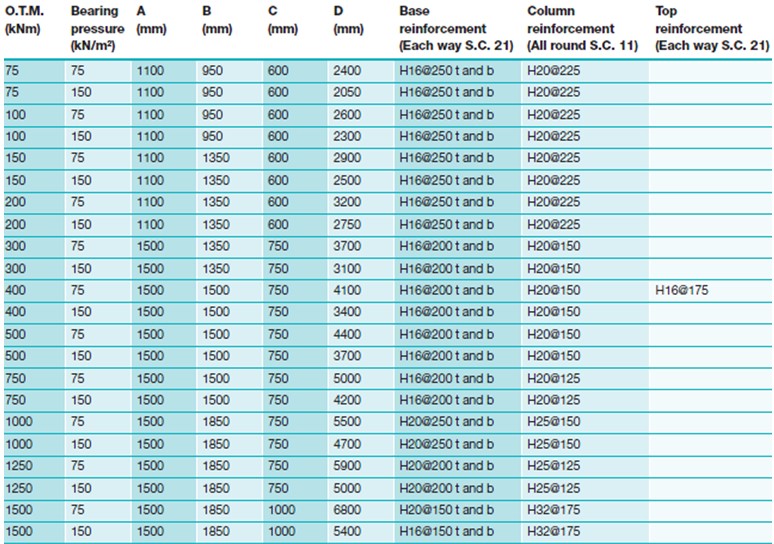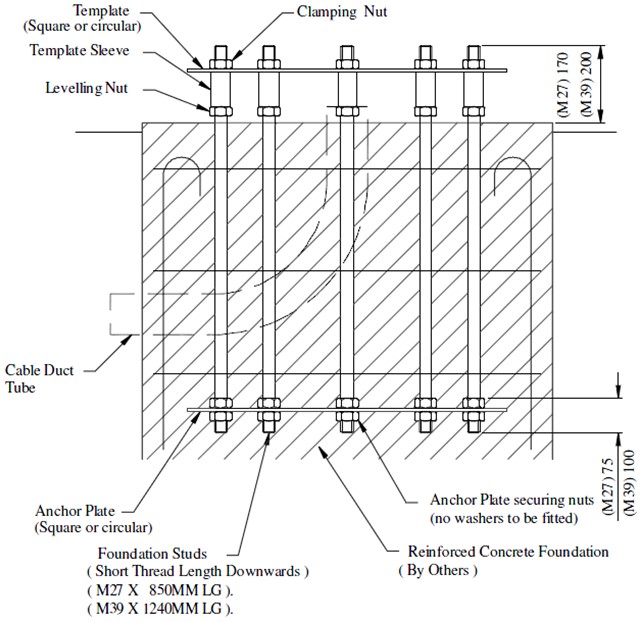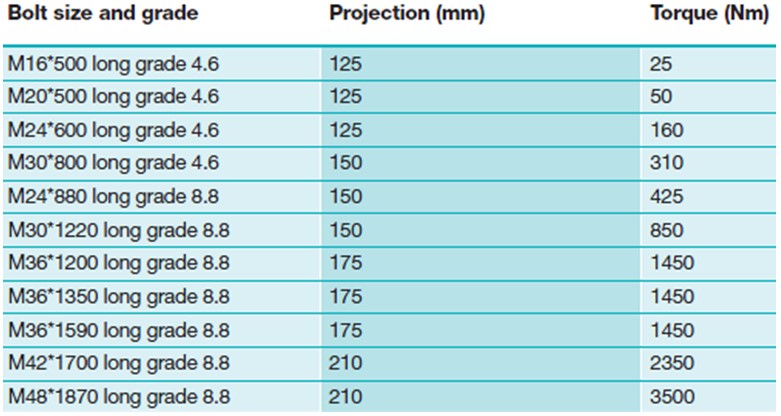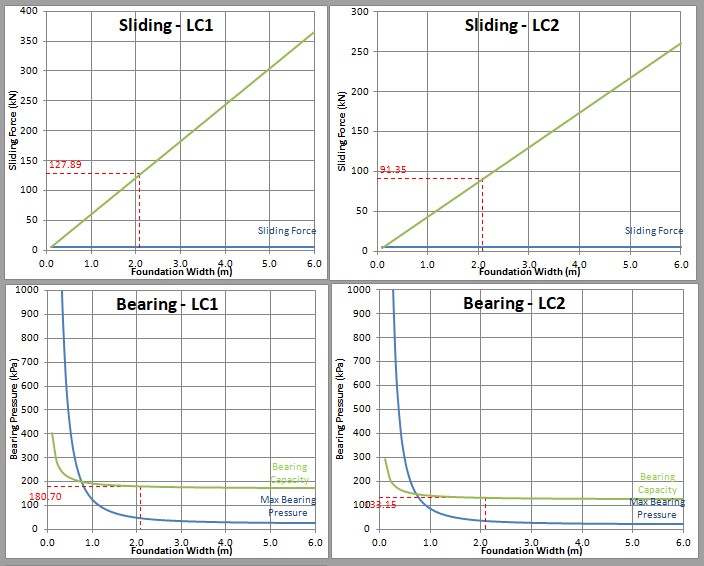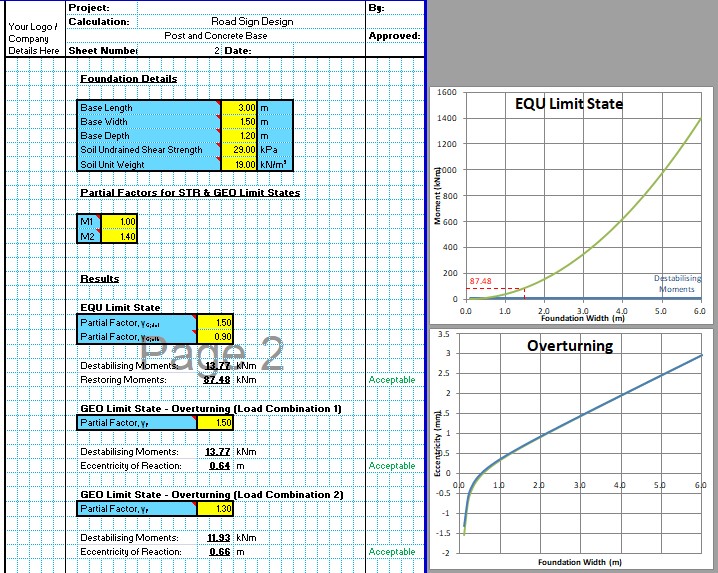High Mast Light Pole Foundation Design is generally undertaken in the same manner as any concrete spread or pad foundation. The principle is to make the foundation large enough so that the overturning moment does not exceed the maximum bearing capacity of the soil. As high mast light poles are standard fixtures they are often designed using standard foundation types which depend on the size of the mast and its location.
The CivilWeb High Mast Light Pole Design Spreadsheet includes a unique High Mast Light Pole Foundation Design Spreadsheet which allows the user to specify a suitable high mast lighting foundation in seconds, from one of three typical high mast foundation design types.
The overturning moment depends on the height of the mast, the size and number of lanterns and on the location. This is explained in detail on our High Mast Wind Loading and High Mast Light Pole Wind Pressure pages.
Soil Allowable Maximum Bearing Capacity
High mast pole foundation design is usually based on the assumption that the underlying soil will not fail if the foundation limits the bearing pressure to a set value called the allowable maximum bearing capacity. The maximum bearing capacity of the soil is the pressure at which the soil starts to fail. This is a critical parameter and must be ascertained before detailed high mast lighting foundation design can begin.
The bearing capacity of a soil can only be determined from site tests such as plate bearing tests, CPTs or SPTs. This should be undertaken by a suitable qualified civil or geotechnical engineer.
For preliminary design there have been a number of very general guidelines for the design of high mast pole foundations which include standard designs based on one or two assumed values for the allowable maximum bearing pressure. Below is one example taken from the Abacus High Mast lighting foundation design brochure. These values are only for use in preliminary design and the bearing capacity must be checked with site measurements before detailed design is done. However this does give a handy guide for preliminary high mast light pole foundation design.
High Mast Light Pole Foundation Types
As described above for general and good soil conditions where there are no site specific restrictions on foundation size or depth, there are three main types of standard foundations commonly used for high mast light pole foundations. these are described below.
Unreinforced Concrete High Mast Light Pole Foundation – Passive
This high mast lighting foundation type consists of an unreinforced block of concrete which resists overturning by mobilizing both the vertical and lateral bearing capacities of the surrounding soils. The mobilized soil pressures are illustrated in the below diagram.
To mobilize these lateral bearing capacities, this type of high mast light pole foundation can only be installed in stiff, cohesive soils. A relatively high minimum soil bearing capacity of 150kN/m2 is required. To achieve this the underlying soils are likely to be stiff clay or compacted sand or gravelly soils. Care must be taken to ensure that any over dig is backfilled in such a way that the lateral bearing capacities of the surrounding soils is still able to be mobilized to resist the overturning moment. If the backfill is not suitably compacted and installed correctly it will not be able to mobilize the lateral bearing capacity of the surrounding soils and this type of high mast light foundation will not be appropriate.
The below table shows the required sizes for unreinforced passive concrete high mast lighting pole foundations to resist defined overturning moments. This is taken from the Abacus High Mast brochure.
Unreinforced Concrete High Mast Light Pole Foundation – Non-Passive
This high mast lighting foundation type consists of an unreinforced block of concrete which resists overturning by mobilizing only the vertical bearing pressures of the underlying soils. The mobilized soil pressures are illustrated in the below diagram.
This type of high mast light pole foundation can be designed to accommodate any level of maximum bearing capacity. For this reason this type of foundation is often used in high mast foundation design when soil conditions are poor or unknown. However, for soft soils, clays and silts additional geotechnical advice is recommended to ensure that the high mast lighting foundation is suitable. For this reason the standard high mast light pole foundation designs are given for soils with maximum bearing capacities greater than 75kn/m2. Three levels are specified, those over 75kn/m2, over 100kn/m2 and over 150kn/m2.
The below table shows the required sizes for unreinforced non-passive concrete high mast light pole foundations to resist defined overturning moments. This is taken from the Abacus High Mast brochure.
Reinforced Concrete High Mast Light Pole Foundation
This high mast lighting foundation type consists of a reinforced concrete pad foundation with a plinth which resists overturning by mobilizing the vertical bearing pressures of the underlying soils. A standard detail drawing is shown below. Further 30m high mast foundation drawings are available on this site and AutoCAD versions are provided with the CivilWeb High Mast Light Pole Design Spreadsheet.
Similar to the non-passive high mast light pole foundation design, standard reinforced concrete pad foundations can be designed to accommodate any level of maximum bearing capacity. However, for soft soils, clays and silts additional geotechnical advice is recommended to ensure that the high mast foundation design is suitable. For this reason the standard high mast lighting foundation designs are given for soils with maximum bearing capacities greater than 75kn/m2. Three levels are specified, those over 75kn/m2, over 100kn/m2 and over 150kn/m2.
The below table shows the required sizes for standard reinforced concrete pad foundations to resist defined overturning moments. This is taken from the Abacus High Mast brochure.
Concrete Specifications for High Mast Light Pole Foundation Design
The concrete used for unreinforced high mast lighting foundations should be a minimum of C20/25.
For reinforced concrete high mast light pole foundations a minimum C28/35 grade should be specified. A minimum cement content of 300kg/m3 and maximum water to cement ratio of 0.60 should be specified. Coarse aggregate size should be 20mm nominal.
Reinforcement should be high tensile steel with a yield stress of 485N/mm2. Cover to all reinforcement should be a minimum of 40mm. Links to column section to be H10@200 c/c – shape code 51 to BS8666: 2005-plus H10 internal lacers at 450 max centres horizontal and 250 centres vertical shape code 99.
The concrete should be left for at least 14 days before any loading including the installation of the high mast light pole.
Site specific ground conditions should be considered such as ground water level and any potential ground contamination effects.
Holding Down Bolts
The holding down bolts must be installed in accordance with the manufacturer’s recommendations. A typical detail is shown below. The bolts should be tightened to the specified torque, as shown in the below table.
Get your copy of the CivilWeb High Mast Light Pole Design Spreadsheet including our unique foundation design tools now for only £20.
Or why not bundle the CivilWeb High Mast Light Pole Design Spreadsheet with our Street Light Foundation Design Spreadsheet for only £5 extra?
Download Free Trial Version
To try out a fully functional free trail version of this software, please Click Here or enter your email address below to sign up to our newsletter.
